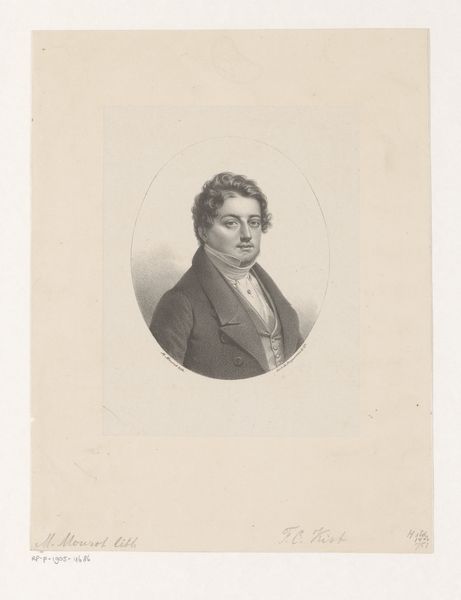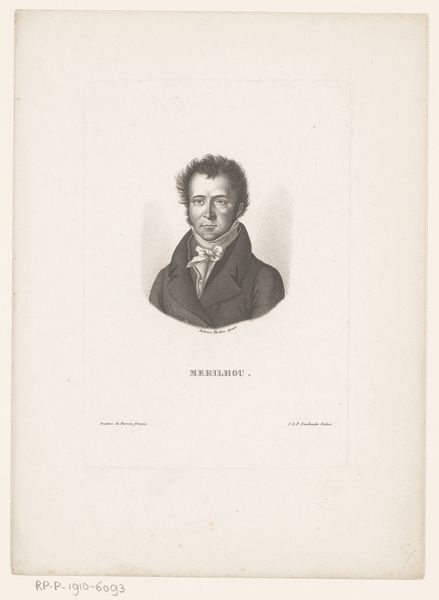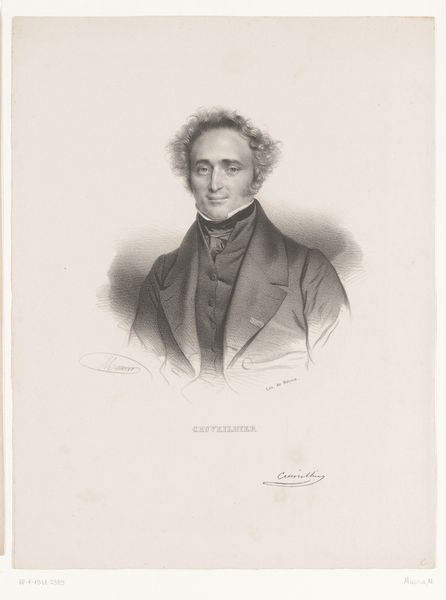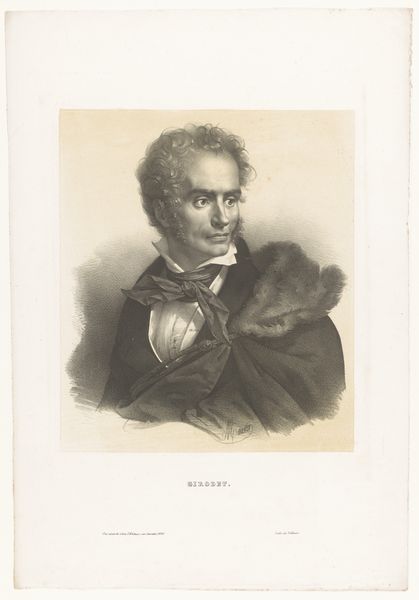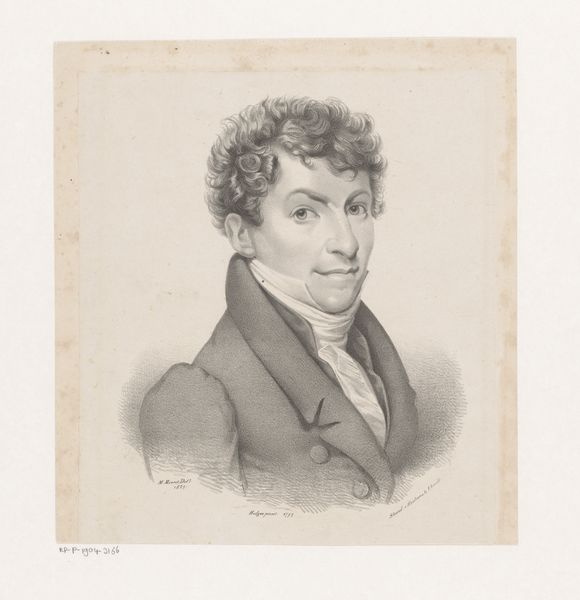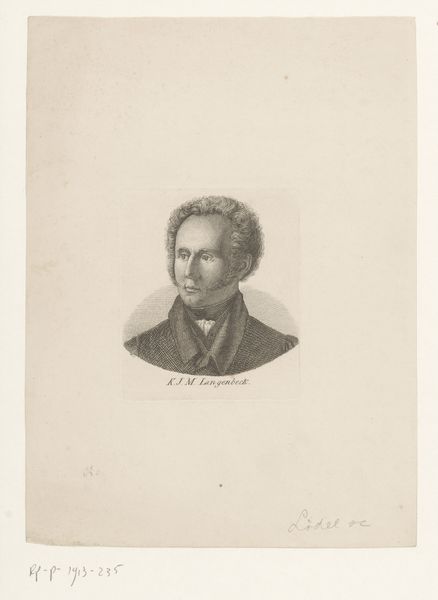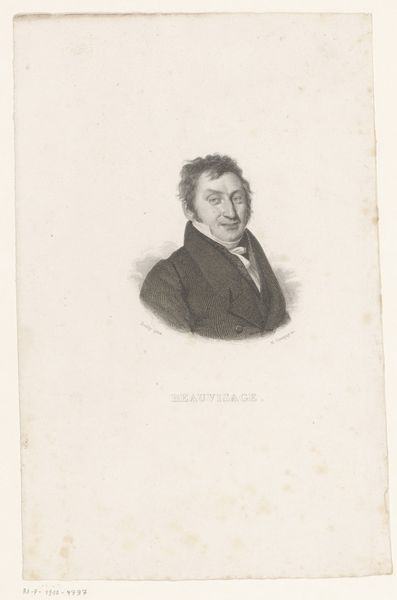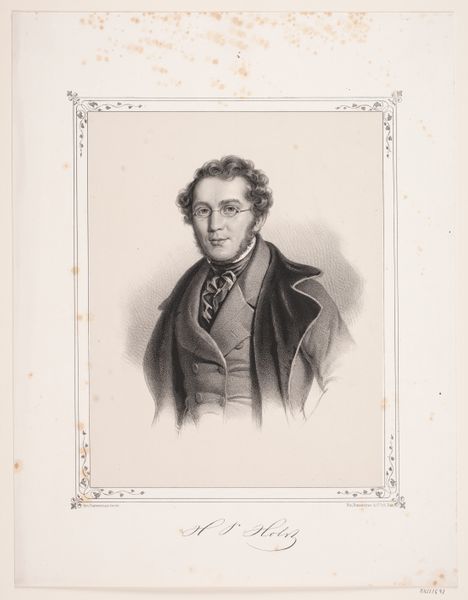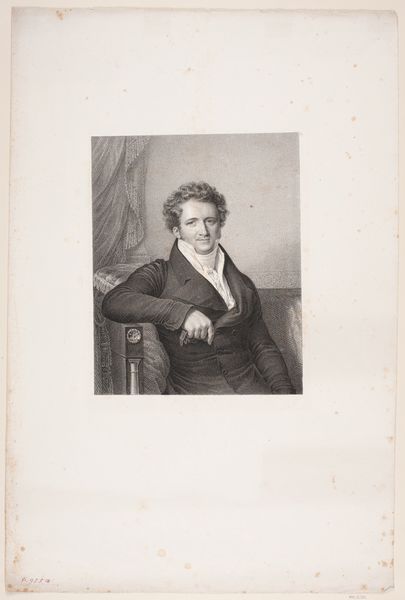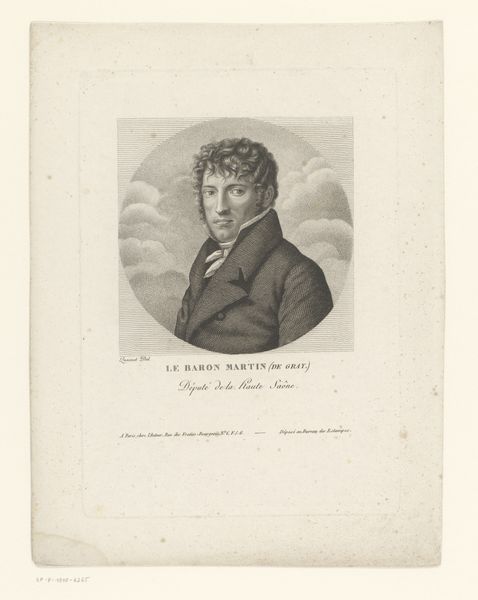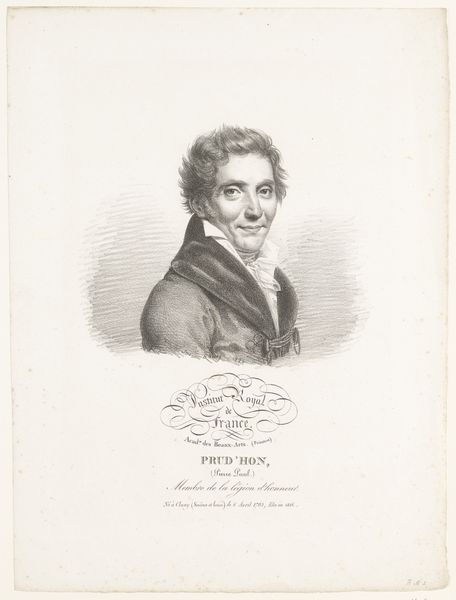
Dimensions: height 445 mm, width 368 mm
Copyright: Rijks Museum: Open Domain
Curator: Here we have Eugène Verboeckhoven’s 1828 engraving, "Portret van Bartholomeus Johannes van Hove," housed at the Rijksmuseum. Editor: It's incredibly precise, almost photographic in its detail. There’s a subtle melancholy to his gaze. What can you tell me about van Hove? Curator: He was a Dutch painter and etcher himself. Looking through a critical lens, it's fascinating to consider their shared positionality within the art world— the socio-political factors informing their artistic choices. Do you notice the trace of history painting conventions in the portrayal? Editor: Absolutely. The engraver emphasizes a particular vision through very tactile choices: observe how the texture on the jacket and wall emerge due to the manual craft and manipulation of material. There are patterns within it. This reminds me of the wallpaper produced by William Morris. Curator: Indeed! And to unpack that material context, the act of engraving itself democratized image distribution, a shift impacting class and gender dynamics of the time. Who had access, who was being excluded or represented in stereotyped ways? Editor: These reproducible portraits were, in essence, commodities. We see the effects on society through how an artwork circulates. This man would like to represent something to a bourgeois public. Curator: It gives us a glimpse into artistic identity during a time when shifts were occurring in access to artmaking, which inevitably meant some changes to the social status and professional opportunities available to artists from diverse backgrounds. This work is exemplary, because it provides clear evidence on what shifts are appearing or becoming relevant. Editor: The interplay of artist and subject—both active agents—captured here serves as more than just a rendering; it reveals systems of commerce and value in society itself. Very well done. Curator: Agreed, a pertinent snapshot of their intersecting roles in shaping artistic landscape. Editor: I concur. This allows us a clear lens into the economic drivers that underpinned creative output.
Comments
No comments
Be the first to comment and join the conversation on the ultimate creative platform.
